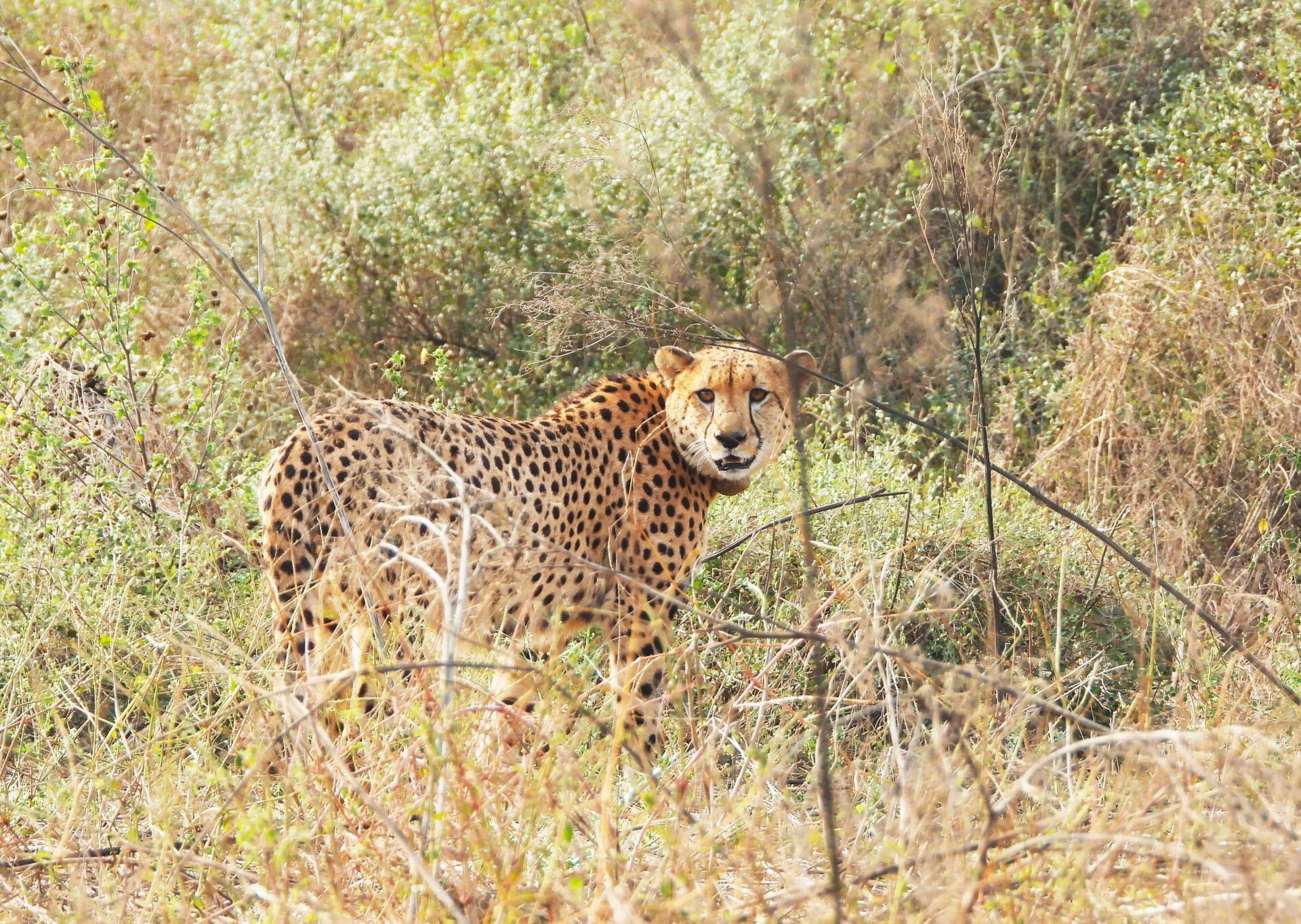NEW DELHI: Cheetahs will be introduced in Gandhi Sagar later this year.
After Kuno National Park in Madhya Pradesh and the upcoming home of cheetahs at Gandhi Sagar wildlife sanctuary in the same state, the Banni grassland reserve
Official sources in Bhopal and Delhi said that the cheetahs in Gandhi Sagar will be introduced by the year end and all preparations that were required, have been completed.
Official sources confirmed that the introduction of cheetahs at Gandhi Sagar, which is spread across Mandsaur and Neemuch districts of north-west Madhya Pradesh bordering East Rajasthan, will take place. The plans have not been shelved or postponed in wake of reports about cheetahs being brought to Banni.
“The two are separate plans. The introduction of cheetahs in Gandhi Sagar will take place as per the timeline, which is scheduled in the last months of this year. In Banni, it is still in the initial stages, and many more modalities need to be worked on,” said a top official associated with the cheetah reintroduction efforts that the Union government has undertaken.
Sources said that while Gandhi Sagar, like Kuno, will start with an enclosed setup that will then transform to a place for free movement of these wild cats, Banni will be more of a breeding centre for cheetahs that will be spread across 500 acres for now.
Dr Rajesh Gopal, chairman of the 11-member Cheetah Project steering committee confirmed that the reintroduction of cheetahs in Gandhi Sagar is going to take place as per the timeline.
Sources based outside of India, who are aware of the international collaboration taking place between India and other countries, including Namibia and South Africa, said that the cheetahs are going to be brought from South Africa as Namibia does not have cheetahs to share with India.
Sources who are familiar with the selection of cheetahs that might be transported to Banni in the near future, said that so far, no one from India has contacted them on issues specifically related to Banni.
The sources said that it is more likely that the cheetahs that are born in Gandhi Sagar will be relocated to Banni so that there is diversification of place for these felines.
Commenting on the timeline of the said process being completed at Banni, the sources informed this newspaper that it will take a relatively long time as multiple issues related to the prey base for the cheetahs, educating and spreading public awareness and creating necessary facilities take a lot of time and cannot be rushed. It will lead to complications in the long term if not properly taken care of in the starting.
Susan Yannetti, who works with the Metapopulation Initiative and was involved in the introduction of cheetahs in Kuno said Banni was a good choice. “Banni has wide-open, flat spaces, which are good for cheetahs. They can run without obstacles slowing them down. Plus, it looks similar to the cheetah habitats in Africa. They will like playing and hiding in the tall, yellow grass at Banni,” she said.
Recently, the Metapopulation Initiative gave a presentation to the Saudi Arabian government. The Saudi Cheetah Conservation Program plans to introduce cheetahs into the Gulf country. According to the officials aware of the development, the subspecies of cheetahs that is likely to be introduced in South Africa will be Soemmeringii or Somali Cheetah, also known as Northeast African Cheetah, which is totally different from the one that has been introduced in India.
In a detailed report titled, “Assessing the Potential for Reintroducing the Cheetah in India” that was prepared in 2010 on the direction of then Minister of Environment and Forests, Jairam Ramesh, by the Wildlife Institute of India and authored by Dr M.K. Ranjitsinh and Dr Y.V. Jhala and five other members, had assessed 10 sites from seven landscapes located in the states of Rajasthan, Gujarat, Madhya Pradesh, Uttar Pradesh and Chhattisgarh for a possible place for reintroduction of cheetahs.
The 10 sites that were analysed by the team included, Sanjay National Park (Mumbai), Dubri Wildlife Sanctuary (Madhya Pradesh), Guru Ghasidas National Park (Chhattisgarh), Kuno Palpur Wildlife Sanctuary (Madhya Pradesh), Nauradehi Wildlife Sanctuary (Madhya Pradesh), Kaimur Wildlife Sanctuary, (Uttar Pradesh), Bagdara Wildlife Sanctuary (Madhya Pradesh), Shahgarh landscape, Jaisalmer (Rajasthan), Desert National Park, Jaisalmer (Rajasthan) and Banni in Gujarat.
The assessment team, at the time, had recommended that cheetahs could potentially be reintroduced at Kuno-Palpur Wildlife Sanctuary, Shahgarh Landscape and Nauradehi Wildlife Sanctuary.
Regarding Banni, it said that the wild prey abundance was extremely low with no current potential for considering the introduction of a large carnivore. However, with restoration, livestock grazing management and law enforcement, the area could bounce back and could potentially support over 50 cheetahs. The assessment had said that if the Gujarat government takes serious steps to restore this landscape, then the site could be re-evaluated at a later date.

